Changemakers: Transforming India’s Health
In India’s thriving health industry, a few trailblazing individuals are driving transformation and true innovation in pursuit of a healthier nation
/wp-content/uploads/2023/06/Healthcare1.jpg)
These Changemakers comprise unique individuals dedicated to revolutionising India’s health landscape. Through collaborations, cross-sector partnerships, and deep awareness of the latest research in their field, these Changemakers support initiatives aimed at promoting wellness, preventive healthcare, and healthy living. By harnessing the power of technology, entrepreneurship, and social impact, they are catalysing tangible change to build a healthier and happier India for all.
Open Yourself Up To Personalized Diabetes Management

Type 2 diabetes (T2D) is a chronic condition characterized by high blood sugar levels. Currently, the management of type 2 diabetes is driven by established international guidelines. However, with respect to the diabetes treatment, “one size does not fit all”. People differ in their presentation of T2D, some have a short duration, others a long duration and other complications at the time of presentation. Therefore, the management of T2D should be personalized.
WHAT IS PERSONALIZED TYPE 2 DIABETES MANAGEMENT?
Personalized diabetes management is based on developing a clinical plan that is tailored to the individual. This may take into account many complex factors such as medical history, age, lifestyle, preferences, and specific needs. It is important to work with patients to develop personalized goals for their treatment, including targeted glycemic control, weight management, prevention and treatment of associated comorbidities and avoidance of complications such as hypoglycemia.
DOES PRESENCE OF HEART, LIVER, OR KIDNEY DISEASE CHANGE YOUR DIABETES MANAGEMENT?
Diabetes patients with heart, liver, or kidney disease are more prone to hypoglycemia (low blood sugar) Therefore, certain oral diabetes medicines which are known to cause hypoglycemia or are unsafe in such cases are avoided and insulin is the preferred treatment. Individualized targets for glycemic control are set and tight blood sugar control is avoided. Furthermore, newer diabetes medicines which are proven to protect heart and kidney function are used as first line in such cases.
KEY MESSAGE: Adopt a personalized approach for diabetes treatment, to improve satisfaction, quality of life, medication adherence and overall health outcomes. Remember, personalized diabetes treatment requires collaboration between you and your doctor. Open communication, regular follow-ups, and active participation in your diabetes management will contribute to achieving optimal outcomes
HOW IMPORTANT IS THE WEIGHT MANAGEMENT IN TYPE 2 DIABETES?
Weight management is very crucial in type 2 diabetes management. Weight loss leads to not only good glycemic controlbut also protects heart, liver, and kidneys in the long run. Weight loss of even 5-10% of body weight can give huge benefits. Newly diagnosed obese or overweight patients with type 2 diabetes can undergo diabetes remission (good blood sugar control without medicines) with weight loss. Therefore, personalized approach to manage obese/overweight diabetes patients, including, use of diabetes medicines which help in weight loss can help them achieve their health goals. A personalized lifestyle plan is must which include a meal plan that considers their food preferences, cultural background, and any existing dietary restrictions and exercise plan considering their fitness level and any physical limitations.
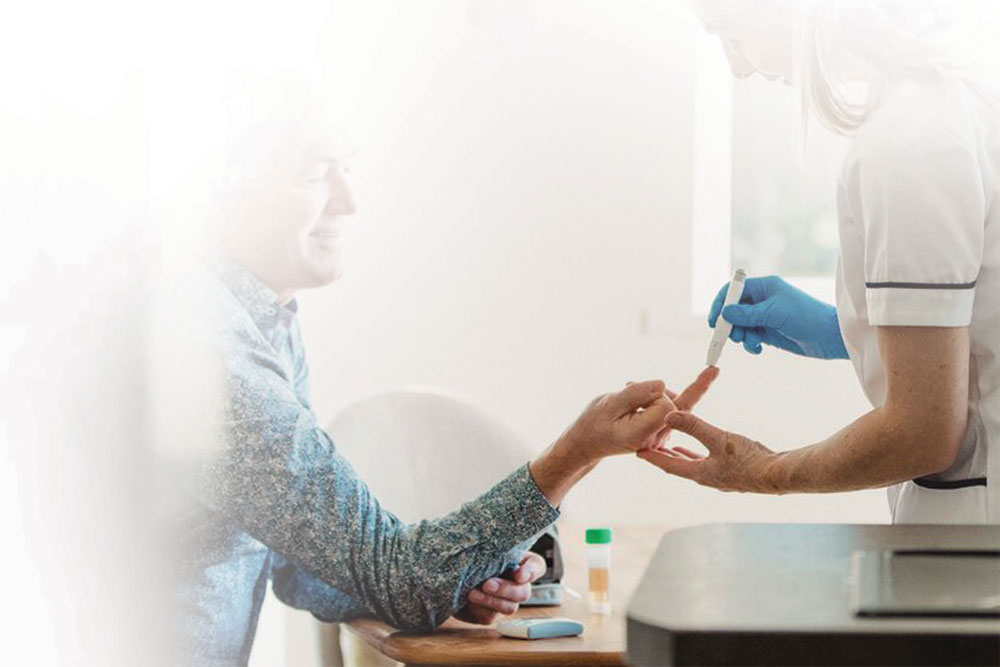
WHAT PERSONAL FACTORS INFLUENCE DIABETES MANAGEMENT?
Diabetes management of every individual is different from others because there are many personal factors influencing it like age, comorbidities, weight, hypoglycemia risk, daily routine, and psychosocial factors. In patients with older age or reduced life expectancy, a personalized less aggressive glycemic target, to minimize the risk of hypoglycemia should be set. Patients with a longer duration of T2D are more likely to have pancreatic beta-cell exhaustion and therefore, more likely to need insulin than those with a shorter T2D duration. Many patients have associated depression and stress, which should be addressed for better glycemic control. A treatment plan should also be tailored to a person’s working hours, day or night shift, meal timings, and travel needs.
TECHNOLOGY IN PERSONALIZED DIABETES MANAGEMENT
Technology has greatly advanced the field of personalized type 2 diabetes management, offering innovative tools and solutions to improve care and empower individuals to better manage their condition. Here are some examples of technology used in personalized type 2 diabetes management: Continuous Glucose Monitoring (CGM) Systems, Mobile apps, insulin pumps, smart insulin pens and injection trackers, digital coaching and education programs and telemedicine.
Robotic Surgery for Cancer: A Welcome Change
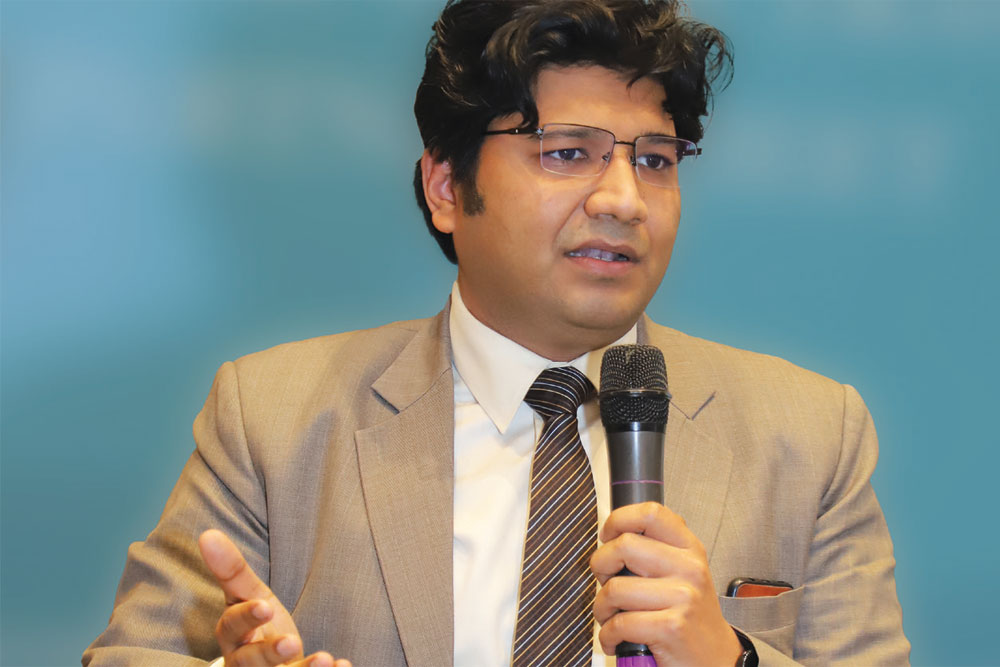
WHAT IS ROBOTIC SURGERY ALL ABOUT?
Robotic surgery is based on the Master and Slave concept where in the surgeon controls robotic arms and guides them to perform manuvours required to complete the surgical procedure. Robotic arms are similar to our wrists with ability to make 7 different movements which provides 360 degree motion and literally mimicks the hands of a surgeon. The advantage which robot has is that these arms are much thinner than a surgeons arms and hence can reach in difficult places. This is of great advantage to us in surgeries for cancer.
HOW ROBOTICS IS MAKING CANCER SURGERY SAFER AND SUCCESSFUL?
Cancer surgery is all about precision and accuracy. The more accurate the surgery is going to be, better will be the outcome. Use of robotics in any surgery allows better magnification, 3 dimensional vision and more dexterity. This allows the surgeon to have better control and hence make the surgery more precise and eventually safer for the patient.
CAN ROBOTICS IMPROVE CANCER SURGERY SUCCESS RATE AND TACKLE COMPLICATED CANCERS.
Robotics have brought a sea change in surgery for cancer. Robotic arms allows us to reach in deep seated difficult areas like the prostate in pelvic cavity and the base of tongue in the mouth. We are able to now offer surgery in these areas of body that we previously thought to be inoperable. Similarily, robotic surgery uses 3d cameras which provides depth perception and make surgery safer. This increases the success rate of cancer surgery. Surgery for thoracic cancers and GI cancers like colon and rectum have become much safer as robotics provide a added layer of safety.
IF THE ROBOT PERFORMS SURGERY THEN WHAT DOES THE SURGEON DO
This is a very important question as it is very commonly asked by almost all our patients. Please understand that there is no artificial intelligence involved in this. The robot cannot think for itself. It just follows the command of the surgeon who is there in the same operating room as the patient and robot. The surgeon controls the robot with his hands and legs. This is similar to controlling a car where in the driver is in command and can make the car move in any direction and in any speed that they want.
Robotics have brought a sea change in surgery for cancer. Robotic arms allows us to reach in deep seated difficult areas like the prostate in pelvic cavity and the base of tongue in the mouth.
AWARENESS ON ROBOTIC SURGERY IN INDIA
Most of the educated and well read patients are nowadays actually demanding robotic surgery. The results of robotic surgery are beginning to show and people are now not averse to getting a robotic surgery done. Also as the misconceptions about robotic surgery are disappearing, people done hesitate to opt for robotic surgery. Patients in general are more bothered about the quality of surgery and eventually their quality of life and don’t mind spending extra for a more advanced procedure. WHAT IS THE FUTURE OF ROBOTIC SURGERY
There is a major challenge about availability and accessibility for robotic surgery in our country. Presently robotic surgery is being offered in metro cities only and that too in major hospitals. Even when it is available, it is not accessible to all patient groups because of prohibitive costs. Next 5 years should see robotic machines percolating into tier 2 cities and a lot of new robotic surgeons being trained. There should be a significant drop in prices too as more and more robots will be available and more and more surgeons will also be available.
Millets: Ancient Grains With Modern-Day Health Benefits
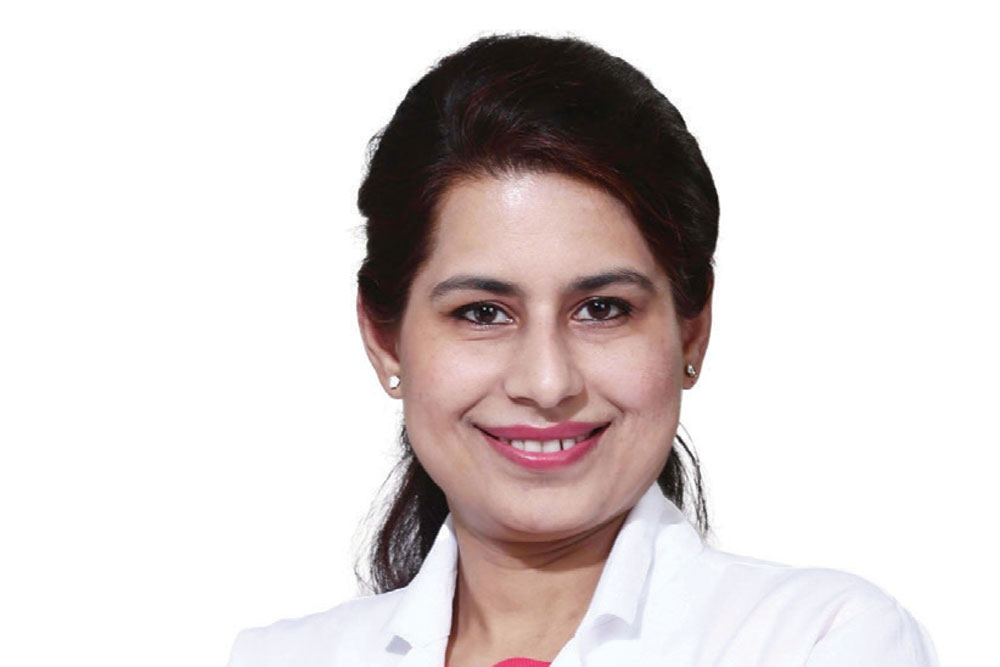
Millets have been a part of the Indian diet for thousands of years, but are now gaining global recognition as a superfood. Millets refer to a group of small-seeded grains that includes Major millets like jowar, bajra, ragi, and other minor millets like Foxtail, Little, Kodo, Proso and Barnyard millet. They are climate resilient, high in fiber and nutrients, and don’t require many fertilizers or pesticides to grow.
HOW ARE MILLETS DIFFERENT FROM WHEAT AND RICE?
The millets contain 7-12% protein, 2-5% fat, 65-75% carbohydrates and 15-20% dietary fibre. Each variety of millet has some unique properties. The protein content of jowar and bajra is approximately 10-11 gm/100 gm, which is similar to whole wheat but higher than rice. The fibre content of major millets (about 11gm/100 gm) is similar to whole wheat but significantly higher than refined wheat flour or rice (<3 gm/100 gm). Among all major millets, Bajra is especially rich in Iron and Vitamin B3 (niacin) and Ragi is rich calcium.
Chhavi Kohli is a Clinical Nutritionist, Certified Diabetes Educator and a Certified Insulin Pump Trainer. She has a rich experience of over 15 years in the field of Therapeutic Nutrition and Diabetes Management.
HEALTH BENEFITS
– Blood Sugar Control: Studies have found that replacing refined wheat and rice with millet can help lower blood glucose levels. The credit goes to the high fiber content of the millets,which aids in satiety and slows digestion, reducing post-meal spikes.
– Heart Health: Millet’s high fiber, mineral, and antioxidant content helps lower cholesterol and blood pressure, reduces inflammation, and decreases heart disease risk. Those managing high blood pressure can benefit from millet’s GABA (Gamma-aminobutyric acid) content.
– Digestive Health: As a prebiotic fiber, millets feed the good gut bacteria, help regulate bowel movements and relieve digestive issues like constipation.
– Immunity: The antioxidants, vitamins, minerals, and amino acids in millets support the immune system and reduce inflammation.
Dr. Chhavi is passionate about increasing awareness and helping people living with Diabetes. Over the years she has conceptualized and executed many workplace wellness programs and created many educational videos on Lifestyle management and Diabetes awareness. She has also trained several Healthcare Professionals in Diabetes management
PREPARING MILLETS FOR OPTIMAL HEALTH
Soaking, sprouting, or fermenting millets before cooking improves their nutritional properties by:
– Neutralizing phytic acid which binds minerals
– Increasing amino acid bioavailability
– Activating enzymes that break down complex carbs.
TIPS FOR CONSUMING MILLETS
While millets are a smart carb choice, they are relatively high in calories and carbohydrate. So its important to consider few points.
– Incorporate millets gradually into your diet, especially if you have sensitive digestion. A good approach is to start slow and rotate millet with other grains or use mixtures.
– Watch Portion Size: Though nutritious, millets pack similar calories to rice and wheat. Limit servings to 1/2 -1 cup.
– Pairing millet with foods high in protein, fiber, and healthy fats enhances satiety and nutrient absorption.
– Limit Processed Varieties: Heavily milled millet products lose much nutritional value. Use millet flour judiciously and avoid heavily processed millet products.
Based on individual needs, different millets provide tailored health benefits. These traditional grains are making a comeback supported by scientific research revealing their multiple nutritional benefits. For better and informed decisions, it is always advisable to consult a qualified professional.
Diabetes & Obesity Awareness: Because It Matters!

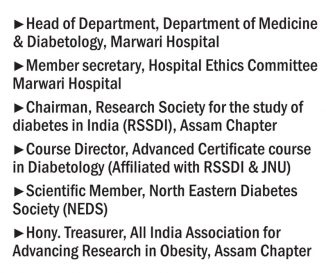
WHAT IS DIABESITY?
The condition of ‘Diabesity’ is a comparatively newer terminology, firstly coined by Sims et al. 1973. Diabesity refers to the complicated conditions of diabetes and obesity occurring simultaneously within a single individual. The incidences of diabetes and obesity are growing at a rapid pace throughout the world. The cause of this increasing prevalence can be ascribed largely to the increasing urbanization and its consequences. Some of the consequences have been the availability of ‘affluent foods’(energy-dense foods that are high in fats and simple sugars and low in dietary fibre) and an overall decrease in peoples’ physical activity (Grundy, 1998). Decreased physical activity over a long period results in an imbalance of energy with excess energy being stored as fat in adipose tissue. In the presence of excess energy intake , the adaptive range is extremely small (<5 per cent) and the body energy reserve as adipose tissue increases rapidly (WHO, 1998).
WHAT IS THE RELATIONSHIP BETWEEN DIABETES AND OBESITY
Obesity is a powerful risk factor for the development of type 2 diabetes and more than two-thirds of patients with type 2 diabetes correlates positively with increasing obesity. The risk of obesity and type 2 diabetes was better defined by a high WHR and waist circumference. Additionally, the duration of obesity was directly related to the risk of diabetes. The risk of type 2 diabetes from obesity is more prevalent across certain ethnic groups such as South Asians and Afro-Caribbeans.
The increasing prevalence of type 2 diabetes is parralled by the rise in the level of obesity in the general population. It is most likely that environmental factors interact with genetic susceptibility in the pathogenesis of type 2 diabetes. The ‘thrifty genotype hypothesis’ has been proposed as an explanation for the increased prevalence of type 2 diabetes. This hypothesis suggests that during times of famine alternating with times of plenty, the ability to store fat efficiently leads to a survival advantage. Society, when there is permanent ‘plenty’, this genetic ‘ advantage’ has become a liability with increased risk of development of obesity and diabetes.
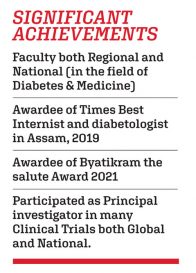
WHAT ARE THE MAJOR COMPLICATIONS OF DIABESITY?
Diabesity, and their associated complications are without doubt a principal issue and threat in developing and under-developed nations. Diabesity has emerged as a major threat. This condition has been described as a slow poison, whose influence cannot be controlled or cured.
The major health impact of Diabesity is due to its long-term complications including Eye Problem, Kidney Problem, Impact on Nervous System, Heart Problem, stroke,Dental Problem, Obstructive Sleep apnea and Metabolic Associated fatty liver Disease etc. Eliminating diabesity is observed to extend both the overall life expectancy and the health-adjusted life expectancy for both male and female.
MANAGEMENT OF DIABESITY
Dietary advice forms the backbone of a diabesity future management. Dietary changes should modify, rather than totally change the patient’s eating pattern.
The health benefits of regular physical activity are immense and this must be conveyed to the patient from the outset of treatment. Just 30 minute of moderate intensity exercise each day can be shown to reduce blood pressure, improve lipid profile, decrease cardiovascular risk, improve energy levels and self esteem, all in addition to aiding weight loss, but individuals who exercise regularly are also more likely to maintain their weight loss and hence improved diabesity care. While several drugs are available in the market, an effective and widely acceptable solution to the menace of diabesity is still awaited.
MESSAGE TO THE READERS
It is quite evident that diabesity has already become a worldwide epidemic with a significant health and economic burden affecting both developed and developing countries. The most accepted way of controlling the epidemic of Diabesity is to screen the human being routinely for an early start before its further advancement, which can thereby result in a healthy life.
(A marketing initiative by Open Avenues)

/wp-content/uploads/2025/09/Cover-Modi-scaled.jpg)













More Columns
Is MS Dhoni Still Playing In ICL? Short Post
Cautious Pragmatism Harsh V Pant
Let’s Get Pizza Suvir Saran